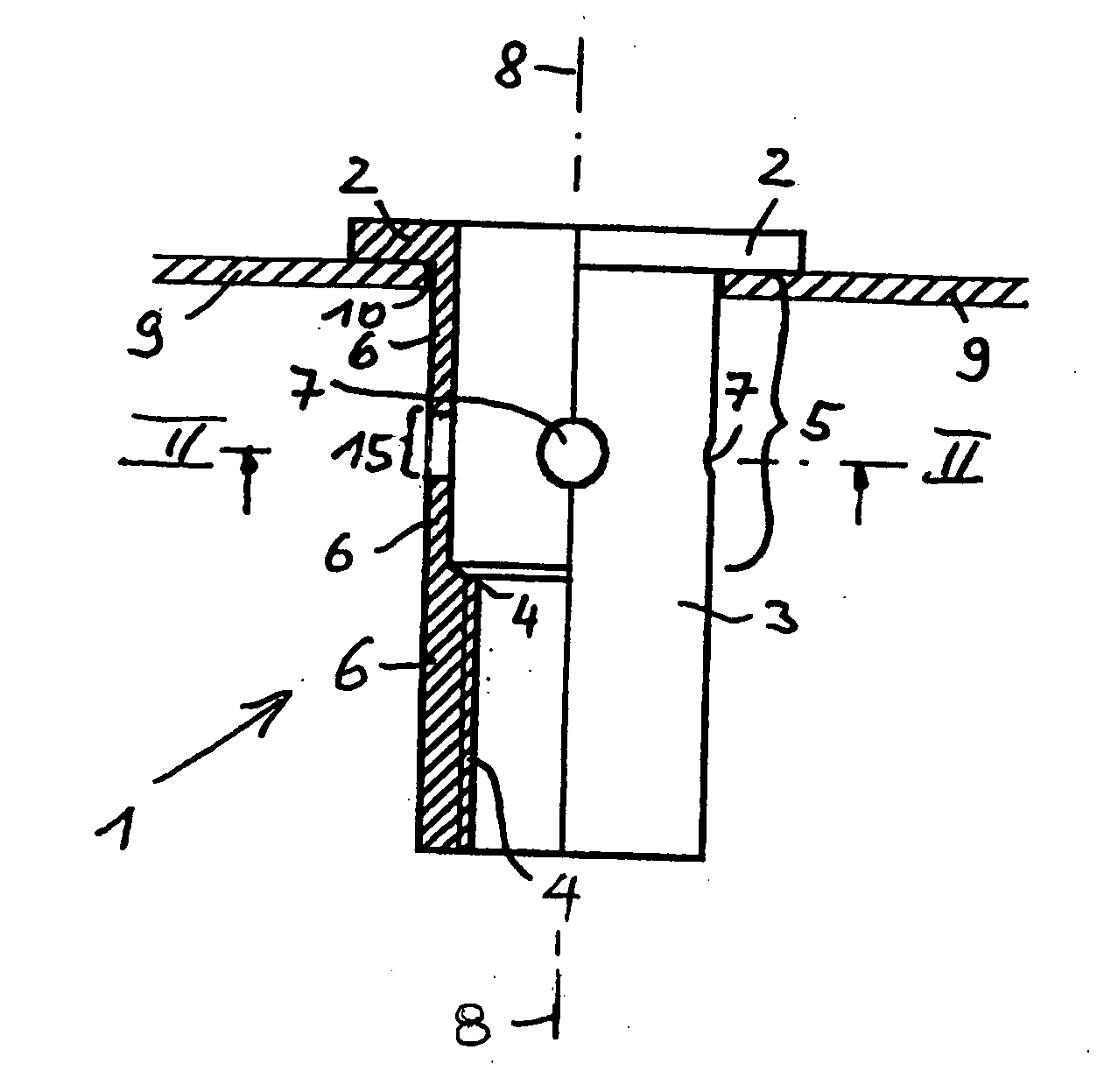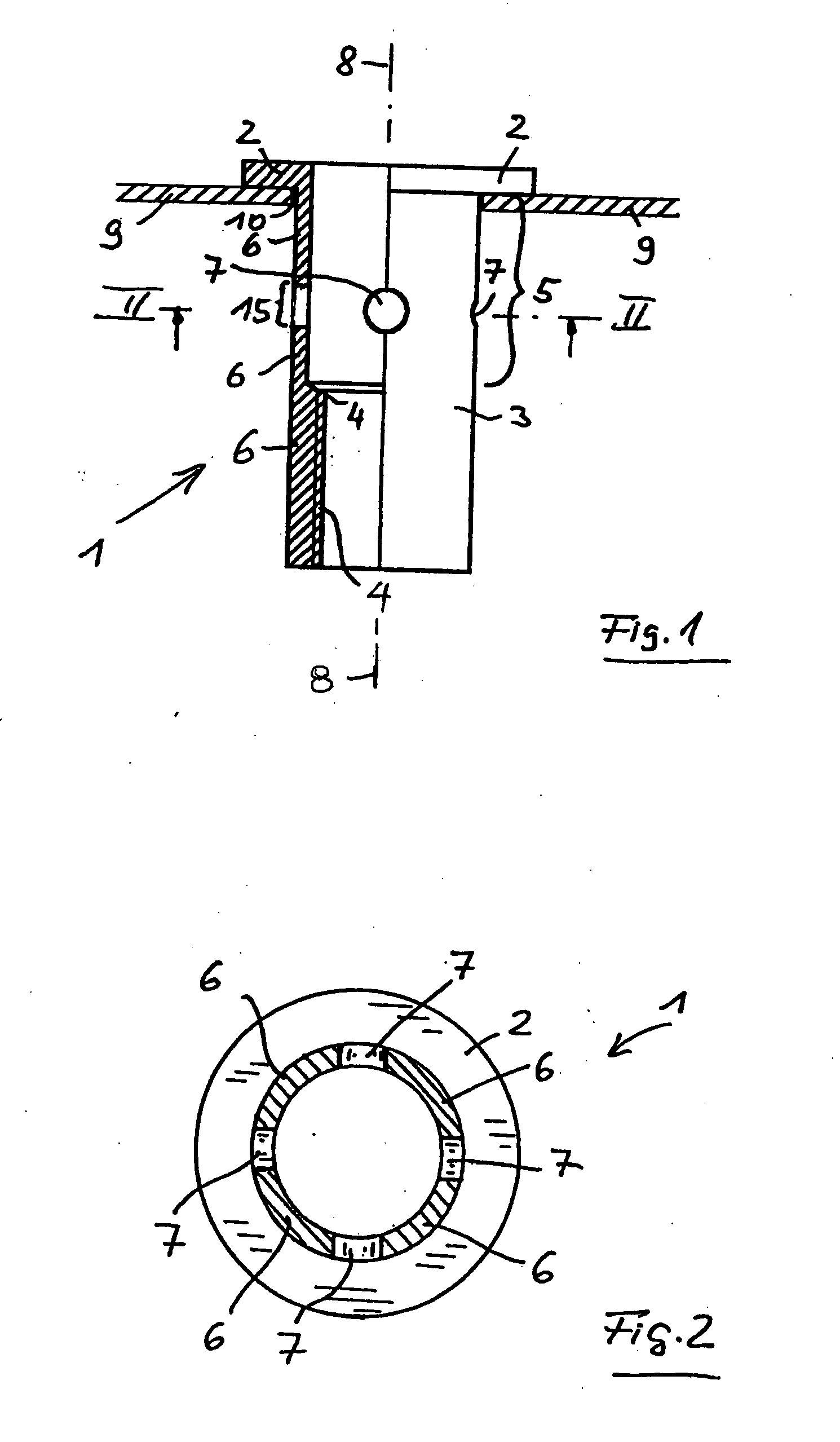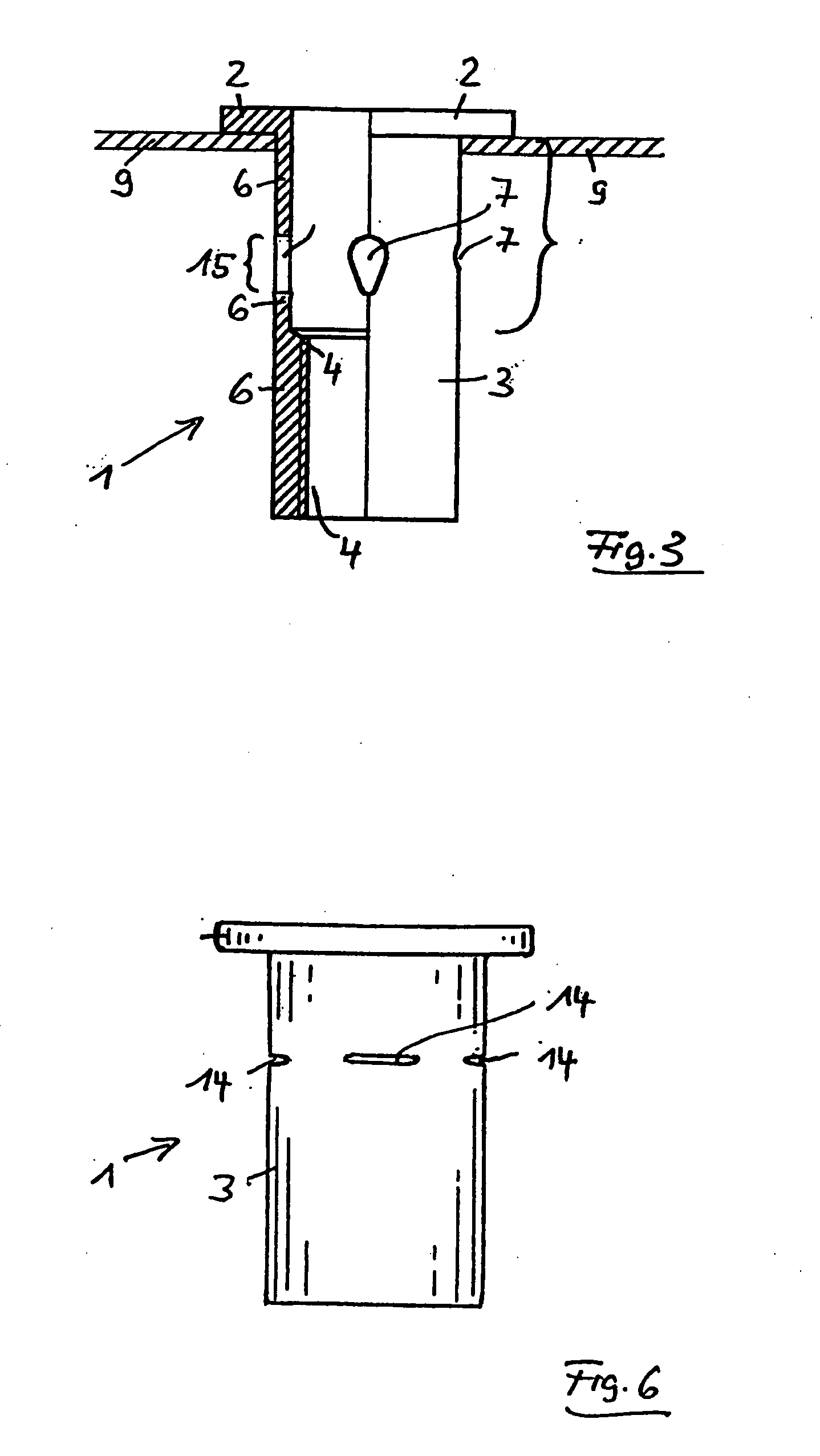Blind fastener and method
a blind rivet and fastener technology, applied in the field of blind rivet elements, can solve the problems of unweakened hank wall and available entire wall thickness, and achieve the effect of increasing the length/width ratio
- Summary
- Abstract
- Description
- Claims
- Application Information
AI Technical Summary
Benefits of technology
Problems solved by technology
Method used
Image
Examples
first embodiment
[0056]FIGS. 1 and 2 illustrate, for the invention, the blind rivet nut 1 before it is set. The blind rivet nut 1 has a setting head 2 and a shank 3. The shank 3 is provided with an internal thread 4 in the region of its distal end or the end facing away from the setting head 2. A deformation portion 5 is positioned between the internal thread 4 and the setting head 2. Basically, the deformation portion 5 extends as far as the setting head 2, since the blind rivet nut 1 could be deformed in this region when a pull is introduced into the internal thread 4. In practice, since the blind rivet nut is to be connected to a plate-shaped component 9, such as metal sheet 9, this deformation portion 5 extends only as far as that side of the metal sheet which faces away from the setting head 2.
[0057]The shank 3 has, over the circumference of the shank 3, a weakening of shank wall 6 in a central region of the deformation portion 5. In the embodiment shown in FIGS. 1 and 2, this weakening is form...
third embodiment
[0065]FIG. 6 shows the blind rivet nut 1. It differs from the other two embodiments only in that, in relation to the initial state illustrated for these, instead of the configuration with the four holes 7 of circular or drop-shaped cross section, an arrangement with four slots 14 at a corresponding location is provided. Before the deformation of the deformation portion 5, these four slots 14 are therefore already present and, during the setting of the blind rivet nut, are further deformed tangentially, starting from this shape, with the result that the slots 14 are lengthened.
[0066]The blind rivet nut 1 according to the embodiment shown in FIG. 7 is modified, as compared with that according to FIGS. 1 and 2, only to the effect that, instead of the holes 7 of circular cross section, holes 7 are provided which are designed as long holes, the longitudinal axis of the long holes running parallel to the longitudinal axis 8 of the shank 3.
[0067]The embodiment according to FIG. 8 differs f...
PUM
| Property | Measurement | Unit |
|---|---|---|
| Length | aaaaa | aaaaa |
| Diameter | aaaaa | aaaaa |
| Shape | aaaaa | aaaaa |
Abstract
Description
Claims
Application Information
 Login to View More
Login to View More - R&D
- Intellectual Property
- Life Sciences
- Materials
- Tech Scout
- Unparalleled Data Quality
- Higher Quality Content
- 60% Fewer Hallucinations
Browse by: Latest US Patents, China's latest patents, Technical Efficacy Thesaurus, Application Domain, Technology Topic, Popular Technical Reports.
© 2025 PatSnap. All rights reserved.Legal|Privacy policy|Modern Slavery Act Transparency Statement|Sitemap|About US| Contact US: help@patsnap.com



